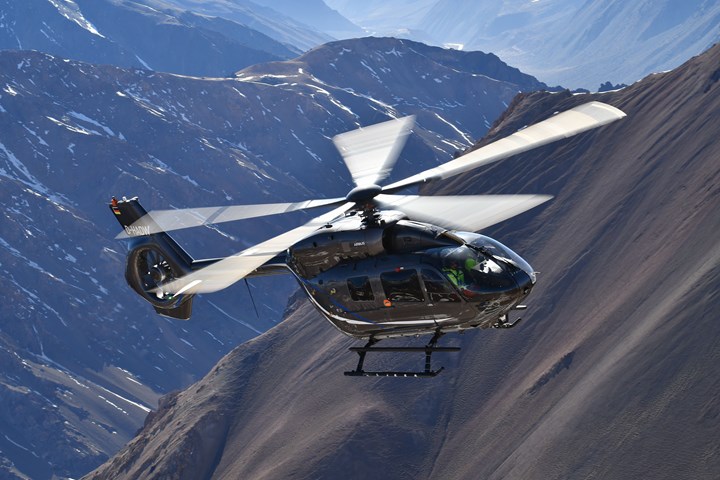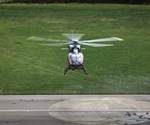Five-bladed H145 receives type certification by EASA
With several test flights under its belt and an EASA certification, Airbus is prepping the H145 for customer deliveries.

Source | Airbus
Airbus Helicopters (Donauwörth, Germany) reported on June 19 that its composites-intensive five-bladed H145 helicopter has been certified by the European Union Aviation Safety Agency (EASA), clearing the way for customer deliveries towards the end of summer 2020. The company says the certification covers the full range of capabilities, including single-pilot and instrument flight rules (IFR) and single engine operations (Cat.A/VTOL), along with night vision goggles capability.
The new version of Airbus’ H145 light twin-engine helicopter was unveiled at Heli-Expo 2019 in Atlanta, with launch customers announced for almost every market segment. Prior to the successful high-altitude test campaign in South America, the new H145 performed several test campaigns including in Spain at medium altitudes and Finland for cold weather.
According to Airbus, this latest upgrade of the H145 family adds an innovative five-bladed rotor to the multi-mission H145, increasing the useful load of the helicopter by 150 kilograms (330 pounds). Further, the simplicity of the bearingless main rotor design is said to ease maintenance operations, further improving the benchmark serviceability and reliability of the H145, while improving ride comfort for both passengers and crew.
Powered by two Safran Arriel 2E engines, the H145 is equipped with full authority digital engine control (FADEC) and the Helionix digital avionics suite. It includes a high performance 4-axis autopilot, increasing safety and reducing pilot workload. Its low acoustic footprint makes the H145 the quietest helicopter in its class.
Certification by the Federal Aviation Administration will follow later this year. The certification for the military version of the five-bladed H145 will be granted in 2021.
Related Content
-
“Structured air” TPS safeguards composite structures
Powered by an 85% air/15% pure polyimide aerogel, Blueshift’s novel material system protects structures during transient thermal events from -200°C to beyond 2400°C for rockets, battery boxes and more.
-
Pull-wound carbon fiber poles enable lightweight, compact, rigid emergency stretcher
Based on military feedback, Epsilon Composite developed an optimized, foldable stretcher that combines telescopic pull-wound carbon fiber tubes.
-
Milliken & Co. partners with MMI Textiles to offer Tegris thermoplastic
The commercial market partnership enables easier access to the Tegris thermoplastic composite fabric for defense customers in the quantities that they require.
















